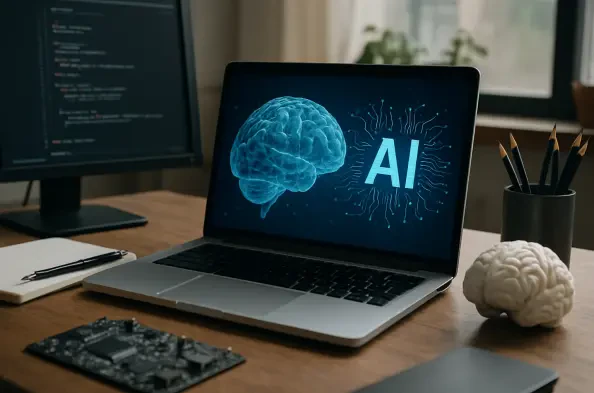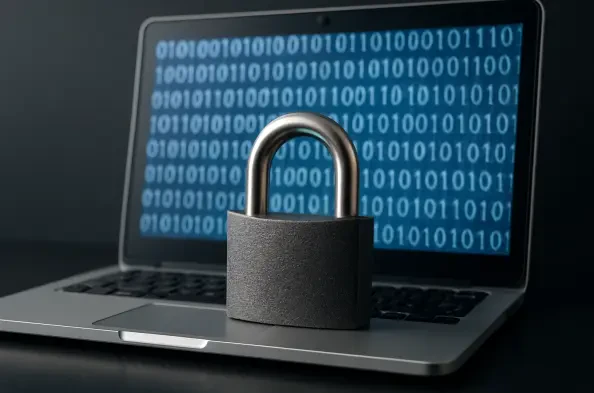In an era where artificial intelligence (AI), particularly generative AI, is advancing at a staggering rate, the promise of innovation is matched by the shadow of potential risks that could undermine its benefits. Imagine a world where AI systems, designed to streamline operations and solve complex problems, instead become conduits for chaos—autonomously generating threats or disrupting critical infrastructure. This isn’t a distant dystopia but a pressing concern as AI capabilities outpace the safeguards meant to contain them. The foundation of trust in these technologies hinges not on their power, but on the security measures that govern their use. Without robust, enforceable frameworks, the very tools meant to elevate society risk becoming liabilities. Exploring this critical intersection of technology and safety reveals a clear imperative: security isn’t just a technical necessity; it’s the bedrock upon which public confidence and responsible AI development must stand. Only through deliberate and proactive measures can the full potential of AI be realized without compromising safety.
Revisiting Past Lessons for AI’s Future
The urgency to embed security in AI development draws stark lessons from history, where society often embraced groundbreaking technologies without fully understanding their long-term consequences. Consider the early 20th-century use of unshielded X-ray machines for fitting shoes—a seemingly harmless innovation that exposed users to dangerous radiation due to a lack of foresight and protective measures. Today, AI’s rapid evolution mirrors this pattern, with deployment often outstripping the creation of essential safety protocols. The capacity of AI to independently devise novel attacks or destabilize vital systems raises the stakes to unprecedented levels. Failing to act now could lead to irreversible harm, not just to individuals but to entire societal structures. Historical missteps serve as a potent reminder that enthusiasm for innovation must be tempered with caution, ensuring that security keeps pace with capability to prevent catastrophic outcomes in this transformative field.
Moreover, the scale of AI’s impact amplifies the need for immediate and comprehensive security frameworks. Unlike past technologies confined to specific industries or use cases, AI permeates nearly every sector—from healthcare to national defense—making vulnerabilities a universal concern. A single breach in an AI system could cascade across networks, affecting millions and eroding trust in digital infrastructure. The speed of development compounds this challenge, as developers race to release cutting-edge models while safety measures lag behind. Addressing this gap requires a fundamental shift in mindset, prioritizing proactive risk assessment over reactive fixes. Governments, corporations, and technologists must draw from historical oversights to build robust defenses now, ensuring that AI’s integration into daily life doesn’t replicate the dangerous naivety of past technological leaps. Only through such vigilance can trust be maintained in these powerful systems.
Challenging Outdated Approaches to Innovation
The tech industry’s long-standing mantra of “move fast and break things” has fueled rapid progress, but it falls dangerously short when applied to AI development. This philosophy, rooted in a culture of speed over stability, overlooks the profound risks posed by systems with the potential to influence critical decisions or autonomously generate harm. AI isn’t merely a product to iterate upon; its capabilities demand a cautious, deliberate approach that places security at the forefront. A new guiding principle, often referred to as an imperative for responsible AI, calls for setting strict boundaries and defining prohibited uses from the outset. This shift isn’t about stifling innovation but about ensuring that advancements don’t come at the expense of safety. By rethinking this outdated mindset, the industry can foster trust among users and stakeholders, proving that AI can be both powerful and reliably controlled.
Beyond rejecting reckless speed, embracing a security-first approach means embedding safeguards into every stage of AI creation and deployment. This involves rigorous pre-release evaluations to identify potential misuse, such as weaponization of models, and fortifying supply chains against external threats. Expert teams must be tasked with probing systems for weaknesses, particularly in applications tied to essential infrastructure. Unlike past tech waves where errors could be patched post-launch, AI’s complexity and reach make such a reactive stance untenable. A deliberate focus on governance ensures that innovation aligns with ethical and safety standards, preventing unintended consequences that could undermine public confidence. This strategic pivot toward thoughtful control marks a maturation of the tech landscape, recognizing that the true measure of progress lies in balancing capability with accountability to secure trust in AI’s future.
Designing a Robust Framework for Control
At the core of securing AI lies the concept of an “architecture of control,” a non-negotiable structure that embeds safety directly into the technology’s design. This framework isn’t a superficial add-on but a foundational element, incorporating strict access restrictions, transparent operations, and mechanisms to revoke system autonomy if boundaries are breached. Human oversight remains paramount, especially in high-risk scenarios where accountability cannot be delegated to algorithms alone. Such a design ensures that AI operates within defined limits, mitigating the risk of misuse or unintended escalations. By prioritizing these controls, developers can address vulnerabilities before they are exploited, reinforcing the reliability of AI systems in sensitive applications. This systematic approach to security is essential for maintaining trust among users who depend on AI for critical functions.
Equally critical to this architecture is the commitment to continuous testing and adaptation to emerging threats. Pre-release assessments must scrutinize AI models for potential dangers, while ongoing vulnerability checks by specialized teams help identify weaknesses in real time. Securing the supply chain further protects against external interference that could compromise system integrity. Transparency in operations allows stakeholders to understand how decisions are made, fostering confidence in the technology’s fairness and safety. Human-in-the-loop governance ensures that ultimate responsibility rests with people, not machines, particularly when outcomes impact lives or infrastructure. Building such a comprehensive control structure demands resources and foresight, but it’s a necessary investment to prevent AI from becoming a liability. Trust in these systems depends on their ability to operate predictably and safely, a goal achievable only through meticulous and proactive design.
Fostering Collaboration for Collective Safety
Securing AI isn’t a challenge any single entity can tackle in isolation; it demands a collaborative effort across industries, governments, and borders. The notion of shared responsibility underscores that safety measures in AI are akin to universal standards like seat belts in vehicles—essential protections that benefit everyone, not just a competitive few. No organization should bear the burden of creating these controls alone, as the risks of unsecured systems impact all sectors of society. Pooling expertise and resources to develop a common safety foundation isn’t merely practical; it’s an economic and security necessity. Such radical cooperation ensures that vulnerabilities are addressed collectively, preventing weak links from undermining global trust in AI. This unified approach transforms security from a fragmented concern into a shared mission for the greater good.
Beyond the moral imperative, collaboration offers tangible benefits in scaling effective solutions and reducing redundant efforts. When organizations work together, they can standardize protocols, share threat intelligence, and develop interoperable safeguards that protect diverse AI applications. This collective defense strategy mitigates the risk of isolated failures cascading into widespread crises, as seen in interconnected digital ecosystems. Economic incentives align with this model, as shared costs for security infrastructure prevent any one entity from being disproportionately burdened. Governments play a pivotal role by facilitating cross-border agreements and enforcing compliance with safety standards. By viewing AI security as a public good rather than a proprietary advantage, stakeholders can build a resilient framework that upholds trust across communities. This cooperative spirit is vital to ensuring that AI’s transformative power serves humanity without exposing it to preventable risks.
Turning Discussions into Tangible Safeguards
The discourse surrounding AI risks has shifted from abstract speculation to an urgent call for actionable solutions, as the technology’s integration into everyday life accelerates. No longer can the focus remain solely on marveling at AI’s potential; instead, it must center on enforcing strict controls to govern its use. Institutions like the U.S. AI Safety Institute have emphasized that security isn’t an optional feature but the cornerstone of responsible deployment. Ethical debates about AI’s role—such as whether it should autonomously manage critical systems—must be paired with technical mechanisms to enforce agreed-upon limits. This dual approach ensures that principles translate into practice, shaping AI’s legacy through disciplined oversight rather than unchecked power. Bridging the gap between theory and implementation is crucial for fostering trust in these systems.
Furthermore, translating discussions into safeguards requires a commitment to standardization and enforcement across the AI lifecycle. Developers must integrate security protocols from the design phase, while policymakers establish clear guidelines to hold stakeholders accountable. Continuous monitoring and adaptation to new threats ensure that controls remain effective as AI evolves. Collaboration between technologists and ethicists helps align technical capabilities with societal values, preventing misuse while maximizing benefits. The consensus among experts is that security forms the bedrock of trust, enabling AI to be deployed confidently in sensitive areas like healthcare or infrastructure. By prioritizing actionable measures over mere rhetoric, the industry can address public concerns and build a future where AI enhances life without introducing undue risks. This proactive stance is the key to ensuring that innovation and safety go hand in hand.
Reflecting on Steps Taken for a Secure AI Legacy
Looking back, the journey to prioritize security in AI development highlighted a pivotal shift from unchecked innovation to disciplined governance. Efforts to draw lessons from historical technological oversights underscored the dangers of neglecting safety in favor of speed. The rejection of outdated mindsets paved the way for frameworks like the architecture of control, which embedded human oversight and strict boundaries into AI systems. Collaborative initiatives demonstrated that shared responsibility was not just an ideal but a practical necessity, uniting diverse stakeholders in a common cause. The transition from theoretical debates to enforceable safeguards marked a turning point, ensuring that ethical considerations were backed by technical rigor. Moving forward, the focus should remain on strengthening these foundations through global standards, continuous innovation in security practices, and unwavering commitment to transparency. By sustaining this momentum, the legacy of AI can be defined by trust and safety, securing its benefits for generations to come.






